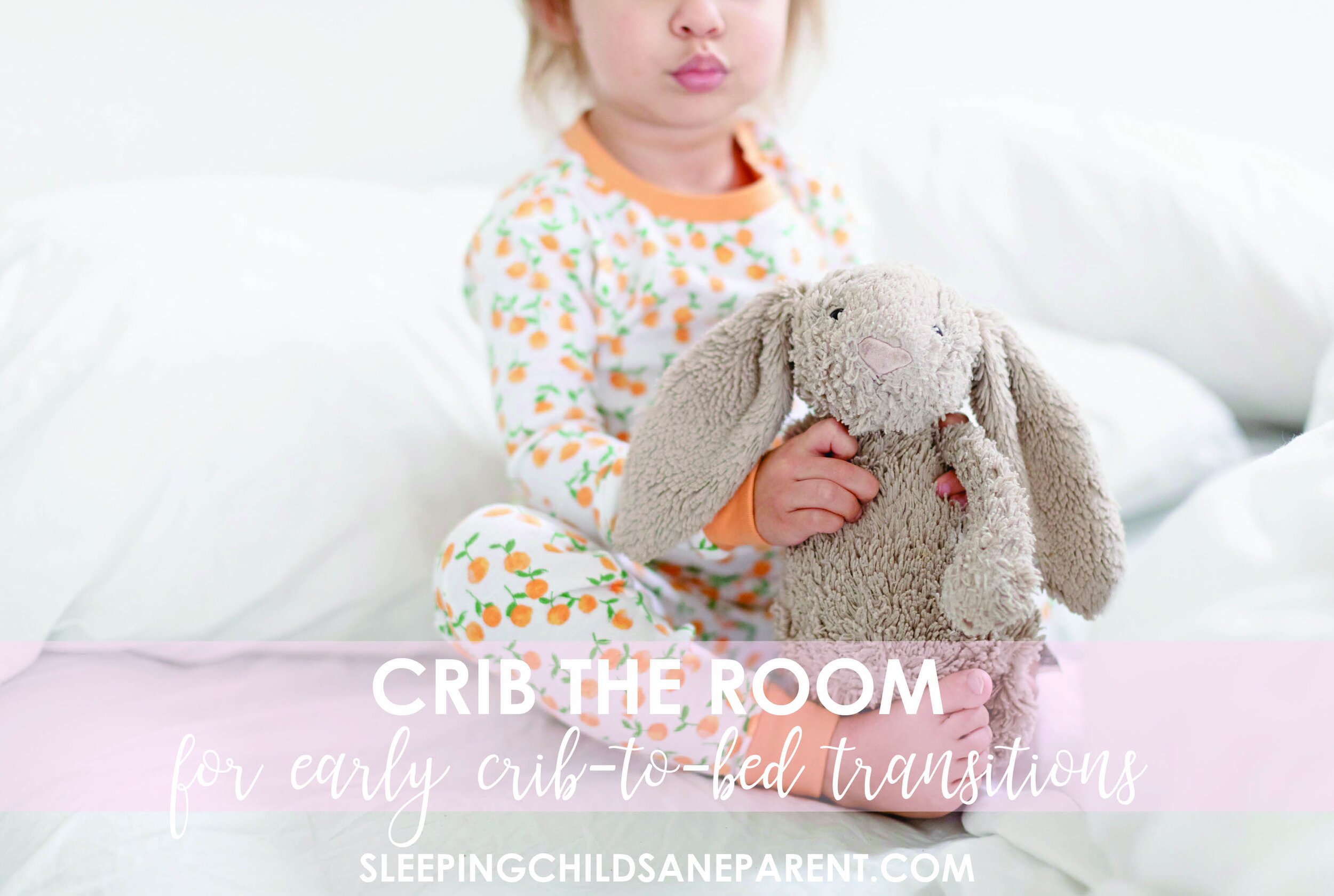Let me just start off by saying, if you can keep your kiddo in the crib for at least 3 years, I recommend doing that. I have a blog post that goes over the common reasons people make the transition early and how to combat those reasons, so definitely start there.
But if you’ve already tried everything to keep the crib and it’s still not working, this post is for you! Today is all about how to “crib the room.” Baby has been contained in a crib for sleep his whole life, and now he’s getting a HUGE upgrade that still needs limits. This upgrade doesn’t have to end good sleep for him (and everyone else in the house!).
Cribbing the room involves a few different pieces.
1. Make the room safe.
Sleep safety is a big deal for the first year of Baby’s life, but it often gets overlooked as Baby gets older. Let’s not overlook it!
Secure furniture to the walls. Dressers, bookshelves, and other pieces of furniture come with the pieces you need to secure the furniture to the wall, so if your young toddler is going to be in an open room, make sure to do this! We don’t want him climbing and pulling a heavy piece of furniture down on top of him!
Remove anything from the room that could be dangerous. Heavy things, sharp things, tiny things that Baby could potentially choke on — anything that could hurt your little one!
Cover outlets. There’s some debate about the safety of different covering options, so do your research to make a decision.
Conceal monitor cords. Hide cords within the walls or use a cable concealer so that Baby can’t get tangled in the cords.
You may want to keep the mattress on the floor or close to the floor in the beginning to minimize injury if Baby falls off the bed.
2. Make the room boring.
When Baby has the freedom to roam around his room, he’s likely to plan with anything that’s in the room.
Remove toys.
Remove crayons or anything that could cause damage.
You may even need to remove books if they become a regular distraction during sleep times.
You’ll probably want to child-proof the dresser and/or closet so that Baby doesn’t start pulling all his clothes out at every sleep time.
3. Make the room pitch black.
We always want Baby’s room to be pitch black for sleep, but if we’re transitioning him out of the crib, we really want to prioritize darkening the room so that Baby can’t see all the things in his room.
Install something to black out window light. My favorite option is Blackout EZ Blinds.
Install light switch covers if Baby is tall enough to reach the light switch.
4. Use a child-proof knob cover.
Like I said in the beginning, Baby is moving from being contained in a crib to being contained in an entire ROOM. This is a huge upgrade! Baby does not need full access to the whole house. In fact, access to the whole house could actually pose a threat to his safety if he were to get out of his room in the middle of the night!
By using a child-proof knob, you’re still able to quickly and easily open his door from the outside whenever necessary, but he stays contained in his room, just like he used to be contained in his bed. This part is essential for these younger toddlers who can’t quite understand the concept of staying in bed all night long yet.
Once the room is completely prepared, expect some disruption in Baby’s sleep. He’s likely to wander around his room for the first couple days or weeks — perhaps for hours, or perhaps for just a few minutes before dozing off.
He may fall asleep on the floor, and that’s just fine. I recommend leaving him wherever he falls asleep to help him understand that he’s in charge of falling asleep in his own bed; he won’t get moved to bed by mom or dad.
Our goal is for him to eventually realize that he’s going to be stuck in his room regardless, so he may as well sleep; and if he may as well sleep, he may as well do so in his comfy bed!
If you need help with this transition or any other aspect of sleep, I can be the support you need to keep going! Look into the various options for working with me here.


